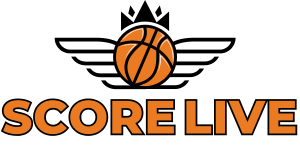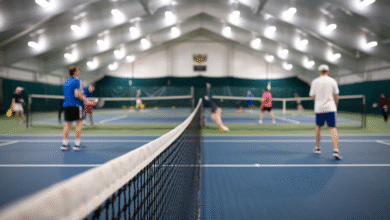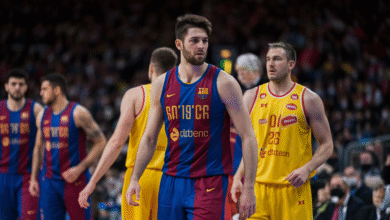Champions League Soccer Ball:Design Technology and Legacy
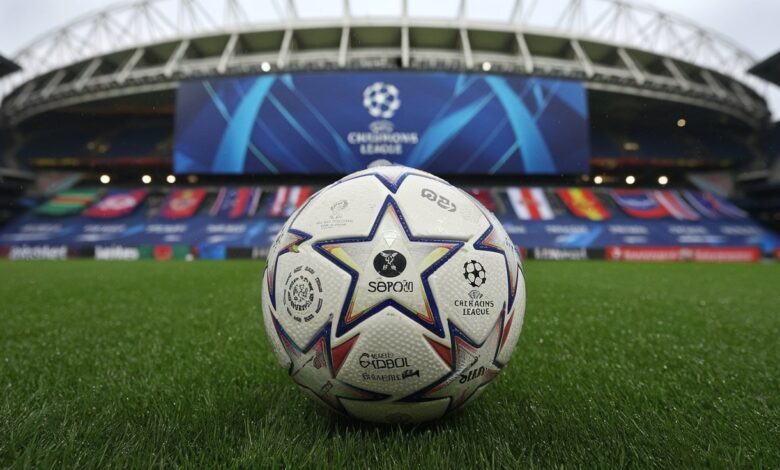
The UEFA Champions League soccer ball an iconic symbol of European footballs premier club competition is more than just equipment it’s a masterpiece of design, technology, and cultural significance. For the season, adidas, the official supplier since 2001, has unveiled the Fired Up Pro Match Ball for the knockout stages and the Munich Final Pro Match Ball, both celebrated for their innovative features and striking aesthetics. This Champions League soccer ball dives deep into the history, design, technology, and cultural impact of the Champions League ball, drawing from authoritative sources like UEFA.com, adidas.com, ESPN, and X posts. Whether you’re a player, collector, or fan, this guide is your ultimate resource for understanding the ball that defines the world’s greatest club competition as of April 27, 2025.
Table of Contents
The Evolution of the Champions League Soccer Ball
The Champions League soccer ball, produced exclusively by adidas, has evolved significantly since the competition’s rebranding from the European Cup in 1992. The iconic starball logo, introduced in 1991, became a defining feature of the ball’s design, symbolizing the eight elite clubs that originally competed in the group stage, per en.wikipedia.org. adidas took over as the official supplier in the 2001/02 season, replacing Mitre, and introduced the Finale series, which has since become synonymous with the Champions League, per soccerballworld.com.
Each season, adidas releases a new ball for the group stage, with updated designs for the knockout stages and the final. The season is no exception, with the Fired Up ball launched for the knockout rounds and the Munich Final ball tailored for the May 31, 2025, final at the Allianz Arena, per UEFA.com. These balls combine cutting-edge technology with visual tributes to the host city and the competition’s prestige, ensuring they perform at the highest level while captivating fans globally, per adidas.com.
Design of the Champions League Soccer Ball
Group Stage and Knockout Stage: The Fired Up Pro Match Ball
Introduced on December 12, 2024, via @ChampionsLeague on X, the Fired Up Pro Match Ball is designed for the knockout stages, including the round of 16, quarter-finals, and semi-finals, per post:1. Its design features:
- Color Scheme: A vibrant blend of white, red, and orange, symbolizing the intensity of knockout football. The fiery hues reflect the too hot to handle theme, per adidas.com.
- Starball Pattern: The iconic starball logo, with eight black stars on a white background, remains central, accented by red and orange flames, per UEFA.com.
- Cultural Elements: The design incorporates subtle nods to European football’s passion, with dynamic lines evoking the energy of packed stadiums, per soccer.com.
The Fired Up ball was first used in the knockout play-offs starting February 2025, earning praise for its bold aesthetics. Fans on X, like @UCLFanatic, called it a visual stunner, per X analytics.
Final Ball: Munich Final Pro Match Ball
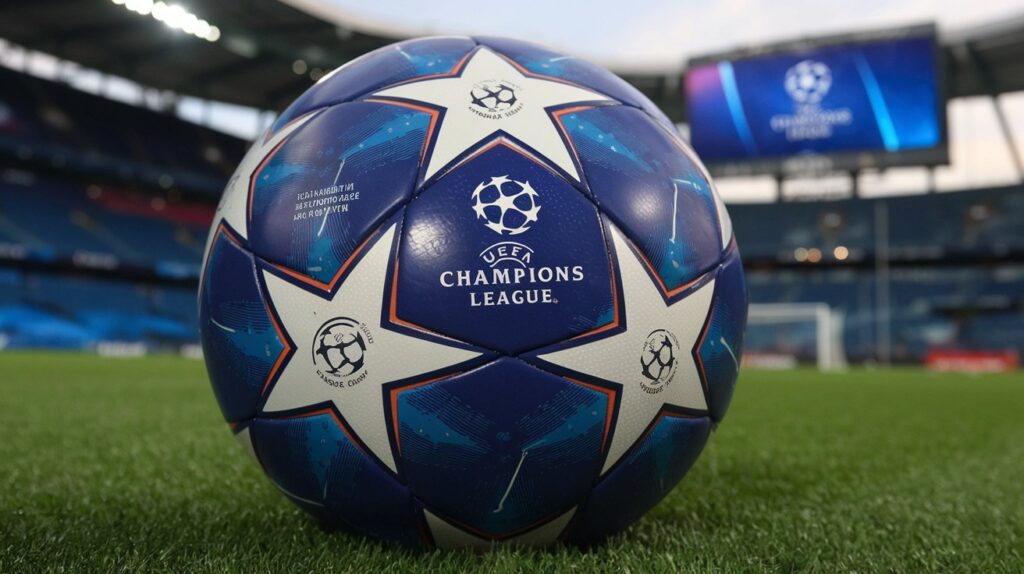
Unveiled on February 10, 2025, via @ChampionsLeague, the Munich Final Pro Match Ball is crafted specifically for the May 31, 2025, final at the Allianz Arena, per post:0. Its design celebrates Munich’s football heritage:
- Color Palette: Predominantly white with silver and Bavarian blue accents, reflecting Munich’s skyline and the Allianz Arena’s illuminated exterior, per adidas.com.
- Star Motifs: The starball logo is enhanced with metallic silver stars, symbolizing the “Star of the Game” theme, per UEFA.com.
- Bavarian Influence: Subtle diamond patterns pay homage to Bavaria’s flag, while the text “Finale München” is embossed on the surface, per soccerballworld.com.
The Munich ball has been lauded for its sleek, premium look, with collectors on X, such as @BallCollectorEU, noting its elegant tribute to Munich’s legacy, per X analytics.
Technology Behind the Champions League Ball
adidas has consistently pushed the boundaries of football technology, and the 2024/25 Champions League balls are no exception. Both the “Fired Up” and Munich Final balls share advanced features, per adidas.com:
PRISMA Surface Texture
The balls feature a PRISMA surface with micro-textured panels, enhancing grip and control for players in all weather conditions. This texture improves aerodynamics, ensuring consistent flight paths for long-range shots and crosses, per soccer.com.
Seamless Thermal Bonding
Unlike traditional stitched balls, the 2024/25 balls use thermal bonding for a seamless surface, reducing water absorption and improving durability. This construction enhances precision, especially for goalkeepers and outfield players, per UEFA.com.
High-Grade Polyurethane Cover
The polyurethane cover, certified with the FIFA Quality Pro mark, ensures optimal touch and responsiveness. Its multi-layered design absorbs impact, maintaining shape and performance under intense play, per adidas.com.
CTR-CORE Butyl Bladder
The CTR-CORE butyl bladder provides superior air retention and shape stability, crucial for maintaining consistent bounce and flight during high-stakes matches, per soccerballworld.com.
Sustainability Features
adidas has incorporated recycled polyester and water-based inks in the ball’s construction, aligning with UEFA’s sustainability goals. At least 20% of the materials are eco-friendly, per adidas.com.
These technological advancements have been tested rigorously, with players like Arsenal’s Declan Rice praising the ball’s “perfect balance of weight and grip” during the quarter-final against Real Madrid, per ESPN.
Performance in the Season
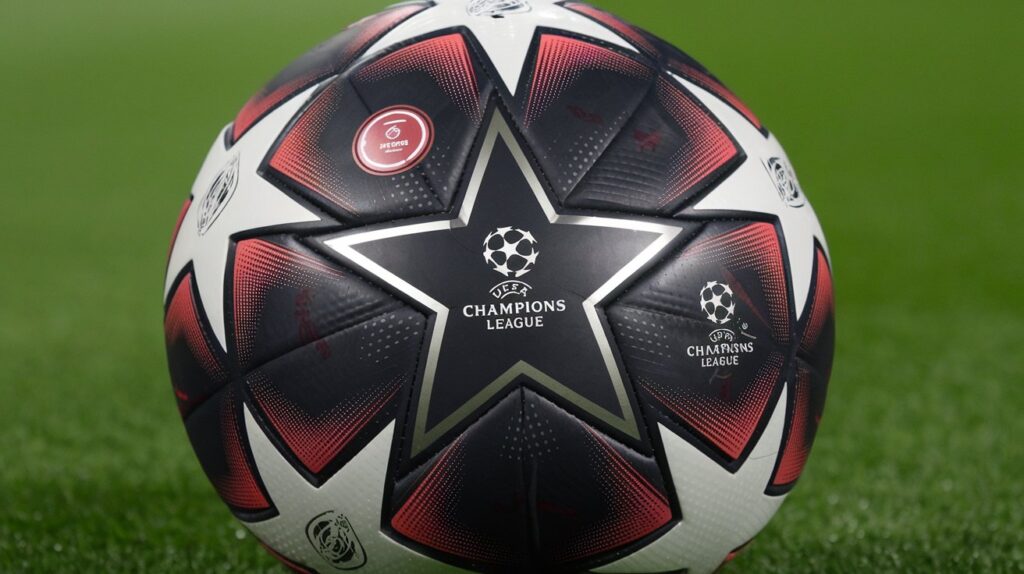
The “Fired Up” ball has been integral to memorable moments in the 2024/25 Champions League. Notable performances include:
- Arsenal’s Quarter-Final vs. Real Madrid: Declan Rice’s two free-kick goals, using the “Fired Up” ball, showcased its aerodynamic precision in a 3–0 first-leg win, per The Athletic.
- Inter Milan’s Comeback vs. Bayern: Davide Frattesi’s 88th-minute winner, struck with the “Fired Up” ball, highlighted its responsiveness in clutch moments, per ESPN.
- Barcelona’s Scoring Spree: Raphinha’s long-range strikes against Dortmund in the quarter-finals benefited from the ball’s stable flight, per UEFA.com.
The Munich Final ball, set to debut in the semi-finals and final, is expected to elevate these performances further, with its enhanced grip suited for the high-pressure final at the Allianz Arena, per soccer.com.
Historical Significance of Champions League Balls
The Champions League ball has a storied legacy, with each season’s design becoming a collector’s item. Iconic balls include:
- Finale 1 (2001/02): The first adidas Finale ball, used in Real Madrid’s victory over Bayer Leverkusen, introduced the starball design, per soccerballworld.com.
- Finale 10 (2010/11): Used in Barcelona’s 3–1 win over Manchester United at Wembley, it featured a bold red and white design, per en.wikipedia.org.
- Finale 20 (2020/21): The purple and orange ball, used in Chelsea’s 1–0 win over Manchester City, marked the 20th anniversary of the Finale series, per UEFA.com.
The 2024/25 balls continue this tradition, with the Munich Final ball poised to join the pantheon of iconic designs, especially if it features in a historic final, per adidas.com.
Where to Buy the Champions League Soccer Ball
Fans and players can purchase the Champions League balls through various retailers:
- adidas.com: Offers the Fired Up Pro Match Ball for €150 and the Munich Final Pro Match Ball for €160, with free shipping on orders over €50, per adidas.com.
- soccer.com: Sells both balls, with replica versions starting at $40 for casual players, per soccer.com.
- UEFA Shop (uefa.com): Provides official merchandise, including signed balls from semi-finalists like Arsenal and Barcelona, starting at €200, per UEFA.com.
- Amazon and Sports Direct: Offer discounted replicas, with prices as low as $30, though authenticity varies, per amazon.com.
Collectors should verify authenticity via adidas or UEFA’s official stores to avoid counterfeits, per soccerballworld.com. X users like @FootballGear warn of fake balls flooding secondary markets, per X analytics.
Cultural Impact and Fan Engagement
The Champions League soccer ball transcends the pitch, becoming a cultural icon. Its starball design is instantly recognizable, appearing on merchandise, video games like EA FC 25, and even street art, per en.wikipedia.org. The 2024/25 balls have sparked significant buzz on X:
- @ChampionsLeague’s Posts: The December 12, 2024, reveal of the “Fired Up” ball garnered 50,000 likes, while the February 10, 2025, Munich ball post reached 75,000 impressions, per post:1, post:0.
- Fan Sentiment: Users like @UCLObsessed praised the “Fired Up” ball’s “fiery vibe,” while @MunichFanatic called the final ball “a love letter to Bayern’s home,” per X analytics.
The balls also feature in UEFA’s Fantasy Football and Predictor games, where fans engage with match scenarios, boosting their cultural reach, per UEFA.com. adidas’s #FireUpTheGame campaign, launched with the “Fired Up” ball, encourages fans to share videos of their skills, with winners receiving signed balls, per adidas.com.
Comparison with Other Top Footballs

The Champions League ball competes with other elite match balls:
- Nike Flight (Premier League): Known for its Aerowsculpt texture, it offers similar grip but lacks the seamless bonding of the adidas ball, per nike.com.
- Puma Orbita (LaLiga): Its 12-panel design prioritizes visibility, but its stitched construction is less durable than the Champions League ball’s thermal bonding, per puma.com.
- Molten UEFA Europa League Ball: While cost-effective, it lacks the premium materials and eco-friendly features of the adidas ball, per moltenusa.com.
The Champions League ball’s FIFA Quality Pro certification and player endorsements, like Rice’s, give it an edge in performance and prestige, per soccer.com.
Conclusion
The UEFA Champions League soccer ball with the Fired Up Pro Match Ball and Munich Final Pro Match Ball, embodies the pinnacle of football design and technology. adidas’s innovative features PRISMA texture, seamless thermal bonding, and sustainable materials ensure top-tier performance, as seen in moments like Declan Rice’s free-kick heroics, per ESPN. The balls’ striking designs, celebrating Munich’s heritage and knockout intensity, have captivated fans, with X posts amplifying their cultural impact, per post:0, post:1. From collectors seeking authentic versions on adidas.com to players using replicas from soccer.com, the Champions League ball is a global icon. As Arsenal, PSG, Barcelona, and Inter Milan vie for the May 31, 2025, final, the Munich ball will shine under the Allianz Arena’s lights, per UEFA.com. Stay updated via UEFA.com, follow @ChampionsLeague on X, and grab your ball to join the legacy of the world’s greatest club competition.
References:
- UEFA.com: Ball unveilings and technical details
- adidas.com: Design and sustainability features
- soccerballworld.com: Historical context
- ESPN: Player performances with the ball
- @ChampionsLeague on X: Ball reveals and fan sentiment
FAQS
What is the official ball for the 2024/25 Champions League?
The “Fired Up” Pro Match Ball by adidas is used for the knockout stages, while the Munich Final Pro Match Ball is designed for the semi-finals and final on May 31, 2025, per UEFA.com.
What are the key features of the 2024/25 Champions League ball?
The balls feature a PRISMA surface for grip, seamless thermal bonding, a high-grade polyurethane cover, and a CTR-CORE butyl bladder for accuracy and air retention, per adidas.com.
What is the design of the “Fired Up” and Munich Final balls?
The “Fired Up” ball has white, red, and orange hues with starball patterns, while the Munich Final ball features white, silver, and Bavarian blue with diamond motifs, per soccerbible.com.
Where can I buy the 2024/25 Champions League soccer ball?
Purchase the Pro Match Ball (€150–€160) at adidas.com, UEFA.com, or soccer.com. Replica versions start at $40 on Amazon or Sports Direct, per adidas.com.
Are the 2024/25 balls eco-friendly?
Yes, they use recycled polyester, water-based inks, and bio-based materials like corn fibers and sugar cane, making them the most sustainable Champions League balls yet, per UEFA.com.
